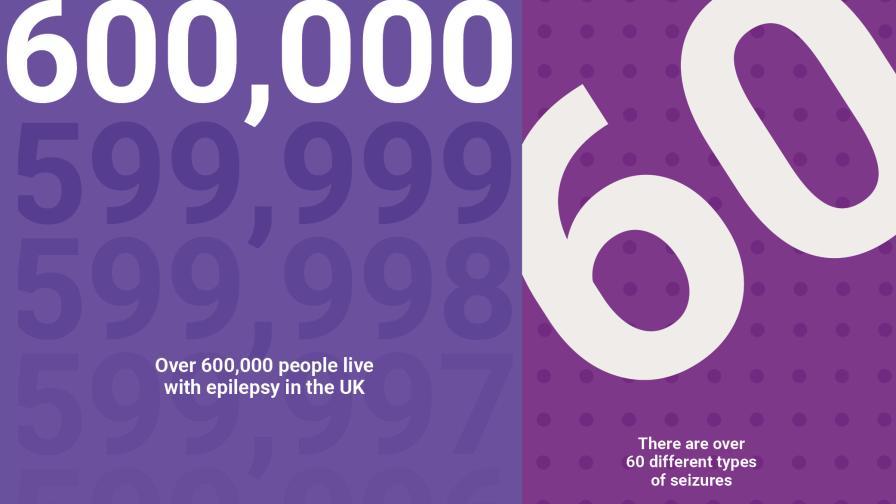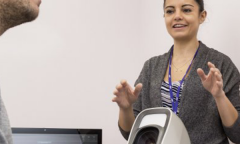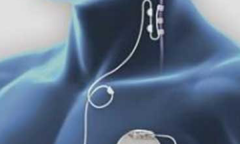- Most seizures happen suddenly without warning, last a short time (a few seconds or minutes) and stop by themselves.
- Seizures can be different for each person.
- Just knowing that someone has epilepsy does not tell you what their epilepsy is like, or what seizures they have.
- Calling seizures ‘major’ or ‘minor’ does not tell you what happens to the person during the seizure. The names of seizures used on this page describe what happens during the seizure.
- Some people have more than one type of seizure, or their seizures may not fit clearly into the types described on this page. But even if someone's seizures are unique, they usually follow the same pattern each time they happen.
- Not all seizures involve jerking or shaking movements. Some people seem vacant, wander around or are confused during a seizure.
- Some people have seizures when they are awake, called 'awake seizures'. Some people have seizures while they are asleep, called 'asleep seizures' (or ‘nocturnal seizures’). The names 'awake' and 'asleep' do not explain the type of seizures, only when they happen.
- Injuries can happen during seizures, but many people don't hurt themselves and don't need to go to hospital or see a doctor.
About epilepsy and seizures
- Epilepsy is a neurological condition - which means it affects the brain. It is also a physical condition, because the body is affected when someone has a seizure.
- Epilepsy is described as the tendency to have repeated seizures that start in the brain. Epilepsy is usually only diagnosed after the person has had more than one seizure.
- The Greek philosopher Hippocrates (460-377 BC) was the first person to think that epilepsy starts in the brain.
- Anyone can have a seizure if the circumstances are right, but most people do not have seizures under ‘normal conditions’.
- Seizures happen when there is a sudden interruption in the way the brain normally works. In between seizures the brain functions normally.
- Epilepsy is a variable condition that affects different people in different ways.
- There are over 60 different types of seizure.
- What seizures look like can vary. For example someone may go ‘blank’ for a couple of seconds, they may wander around and be quite confused, or they may fall to the ground and shake. So not all seizures involve shaking.
- Some people are unconscious during their seizures and so they do not remember what happens to them. Others experience loss of awareness and only remember parts of the seizure. Having a description of what happened from someone who saw their seizure can help with diagnosis. This is sometimes called an ‘eyewitness account’. Some people remember all aspects of their seizure.
- Different epilepsies are due to many different underlying causes. The causes can be complex, and sometimes hard to identify. Researchers now believe that the chance of developing epilepsy is probably always genetic to some extent. However, a person may start having seizures due to a brain injury or stroke.

Epilepsy statistics
- People with epilepsy are protected under the Equality Act 2010, a law that aims to protect people against different types of discrimination.
- Around 79 people are diagnosed with epilepsy every day in the UK.
- Up to 10% of people worldwide will have a one-off seizure at some point in their life (although this does not necessarily mean they have epilepsy).
- Over 600,000 people in the UK have epilepsy. That’s about one in every 100 people. There are around 50 million people with epilepsy in the world.
- Up to 5% of people with epilepsy are affected by flashing lights (called photosensitive epilepsy), so most people with epilepsy do not have seizures triggered by flashing lights.
Diagnosis and treatment
- Epilepsy can start at any age. For some people their epilepsy might ‘go away’ and they stop having seizures. This is called spontaneous remission.
- Epilepsy can be difficult to diagnose and there are a number of different tests that might be done to help with a diagnosis such as an Electroencephalogram (EEG) or a Magnetic Resonance Imaging (MRI) scan.
- Epilepsy is usually treated with anti-seizure medication (ASM). ASM aims to stop seizures from happening, but does not cure epilepsy.
- With the right ASM, up to 70% of people with epilepsy could have their seizures controlled.
- The first ASM used to treat epilepsy was phenobarbitone in 1912. There are now over 30 different ASMs available in the UK.
- For people who do not have their seizures controlled with ASM, surgery may be an option. This can involve removing the part of their brain that causes the seizures.
- Some people may have a form of treatment called Vagus Nerve Stimulation therapy (VNS) to help control their epilepsy. This involves having a special device implanted in the chest that sends regular electrical signals to the brain through the vagus nerve in the neck.
Diagnosing epilepsy
Diagnosing epilepsy usually involves collecting information from different tests, finding out what happens before, during, and after your seizures, and speaking to someone else who might have seen your seizures. With all the collected information the most likely cause of your seizures may be found.
Epilepsy treatment
If you have just been diagnosed with epilepsy, you may have questions about medication and treatment.
Vagus Nerve Stimulation
Vagus nerve stimulation therapy is a treatment for epilepsy that involves a stimulator (or 'pulse generator') which is connected, inside the body, to the left vagus nerve in the neck. The stimulator sends regular, mild electrical stimulations through this nerve to help calm down the irregular electrical brain activity that leads to seizures.
Epilepsy myths
Epilepsy is often misunderstood with different facts and myths surrounding the condition despite over 600,000 people in the UK having epilepsy. We want to dispel the many myths that still exist and bring you important information about seizures, seizure triggers and epilepsy first aid.
MYTH 1: You shake and jerk when you have epilepsy
FACT 1: Not every seizure means a person shakes and jerks, nor is a person always unconscious during a seizure. Shaking and jerking while unconscious are usually associated with tonic clonic seizures. There are a range of seizures which have different side effects and can affect people differently.
MYTH 2: Flashing lights cause seizures in everyone with epilepsy
FACT 2: Around 1 in 100 people has epilepsy, and of these people, up to 5% have photosensitive epilepsy. Triggers differ from person to person, but common triggers include a lack of sleep, stress, and alcohol.
MYTH 3: You can restrain someone during a tonic clonic seizure and put your finger in their mouth
FACT 3: During a tonic clonic seizure you should never hold the person down or put anything in their mouth. It's important to know exactly what to do when someone has a tonic clonic seizure so that you can act quickly.
MYTH 4: The only side effects of a seizure are tiredness and being confused
FACT 4: Having epilepsy can affect people in different ways. Knowing that a person ‘has epilepsy’ does not tell you very much about what happens for them or how epilepsy affects them. For example, some people may have problems with sleep or memory and for some people epilepsy may affect their mental health.
When to call an ambulance
Usually, when a person has a seizure, there is no need to call 999 for an ambulance. However, always do call an ambulance if:
- you know it is the person’s first seizure;
- they have injured themselves badly;
- they have trouble breathing after the seizure has stopped;
- one seizure immediately follows another with no recovery in between;
- the seizure lasts two minutes longer than is usual for them; or
- you do not know how long their seizures last.
For someone you do not know follow our basic first aid messages: Calm, Cushion, Call.
What to do if someone you don’t know has a seizure
How you can help someone during a seizure will depend on the type of seizures they have, and how much you know about their epilepsy.
If you don’t know the person, follow our basic first aid message:
1. Calm. Stay calm and take control of the situation
2. Cushion. Cushion their head with something soft
3. Call. Call an ambulance
If they seem confused, stay with them, talk calmly and quietly, and gently guide them away from any danger.
For more detailed information, visit epilepsysociety.org.uk/first-aid
Information updated: September 2023
Epileptic seizures
There are many different types of epileptic seizure. Any of us could potentially have a single epileptic seizure at some point in our lives. This is not the same as having epilepsy, which is a tendency to have seizures that start in the brain.
What is epilepsy?
Epilepsy varies greatly and affects everyone differently. If you or someone you know has epilepsy, you may find it helpful to learn more. Here are some basic facts about epilepsy and where to get more information.
Want to find out more?
Taken from our Facts about epilepsy factsheet.







